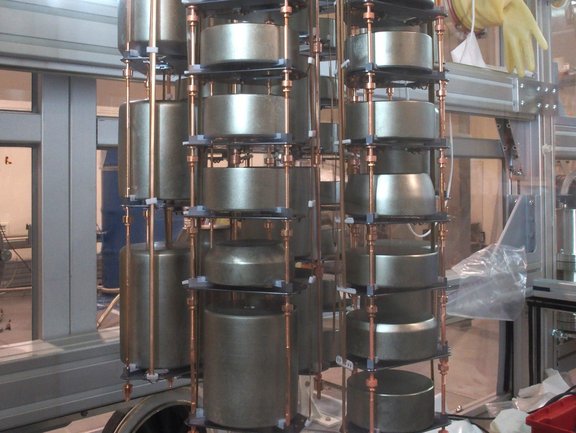The GERDA experiment in the Italian Gran Sasso underground laboratory searches for a hypothetical radioactive decay: the neutrinoless double beta decay, in which two neutrons within a nucleus (in this case the germanium isotope 76Ge) decay simultaneously to two protons and two electrons, and that without the usual emission of two neutrinos.
Neutrinos may be their own antiparticles, and then this decay should be observable. Presently, the neutrinoless double beta decay is the most sensitive method to test this potential property of neutrinos.
Recently, GERDA completed data taking, and this week Yoann Kermaïdic of the MPIK presents the current analysis at the (virtual) NEUTRINO conference. The GERDA scientists couldn’t observe the decay, but they could improve the lower limit for the half-life by a factor of two compared to the previous value: now it is 1,8 × 1026 years – this is 16 orders of magnitude longer than the age of the Universe!
GERDA has reached all its envisaged goals and is – thanks to a number of shielding techniques – the experiment with the world-wide lowest number of interfering signals in the relevant energy region. A few months ago, the LEGEND collaboration has taken over the GERDA installations and already started with the modification of the setup and tests.
